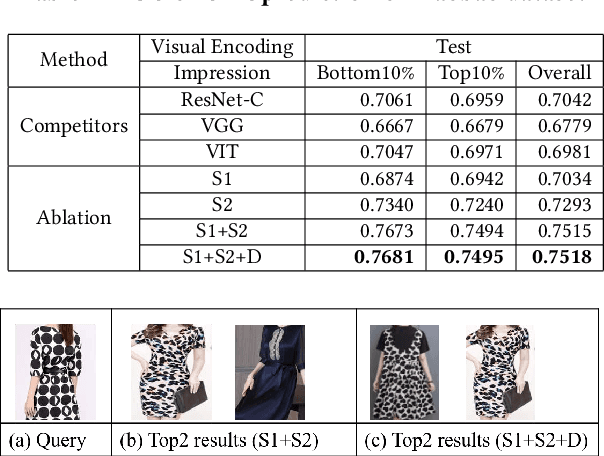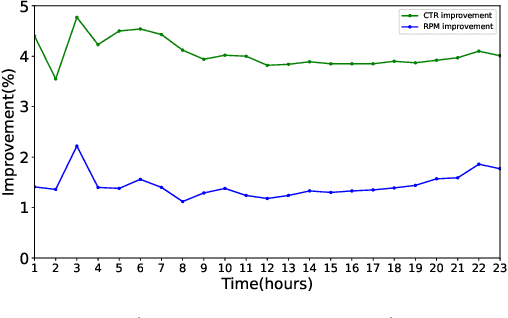Wanxian Guan
Creative4U: MLLMs-based Advertising Creative Image Selector with Comparative Reasoning
Aug 18, 2025Abstract:Creative image in advertising is the heart and soul of e-commerce platform. An eye-catching creative image can enhance the shopping experience for users, boosting income for advertisers and advertising revenue for platforms. With the advent of AIGC technology, advertisers can produce large quantities of creative images at minimal cost. However, they struggle to assess the creative quality to select. Existing methods primarily focus on creative ranking, which fails to address the need for explainable creative selection. In this work, we propose the first paradigm for explainable creative assessment and selection. Powered by multimodal large language models (MLLMs), our approach integrates the assessment and selection of creative images into a natural language generation task. To facilitate this research, we construct CreativePair, the first comparative reasoning-induced creative dataset featuring 8k annotated image pairs, with each sample including a label indicating which image is superior. Additionally, we introduce Creative4U (pronounced Creative for You), a MLLMs-based creative selector that takes into account users' interests. Through Reason-to-Select RFT, which includes supervised fine-tuning with Chain-of-Thought (CoT-SFT) and Group Relative Policy Optimization (GRPO) based reinforcement learning, Creative4U is able to evaluate and select creative images accurately. Both offline and online experiments demonstrate the effectiveness of our approach. Our code and dataset will be made public to advance research and industrial applications.
Visual Encoding and Debiasing for CTR Prediction
May 09, 2022



Abstract:Extracting expressive visual features is crucial for accurate Click-Through-Rate (CTR) prediction in visual search advertising systems. Current commercial systems use off-the-shelf visual encoders to facilitate fast online service. However, the extracted visual features are coarse-grained and/or biased. In this paper, we present a visual encoding framework for CTR prediction to overcome these problems. The framework is based on contrastive learning which pulls positive pairs closer and pushes negative pairs apart in the visual feature space. To obtain fine-grained visual features,we present contrastive learning supervised by click through data to fine-tune the visual encoder. To reduce sample selection bias, firstly we train the visual encoder offline by leveraging both unbiased self-supervision and click supervision signals. Secondly, we incorporate a debiasing network in the online CTR predictor to adjust the visual features by contrasting high impression items with selected items with lower impressions.We deploy the framework in the visual sponsor search system at Alibaba. Offline experiments on billion-scale datasets and online experiments demonstrate that the proposed framework can make accurate and unbiased predictions.
 Add to Chrome
Add to Chrome Add to Firefox
Add to Firefox Add to Edge
Add to Edge